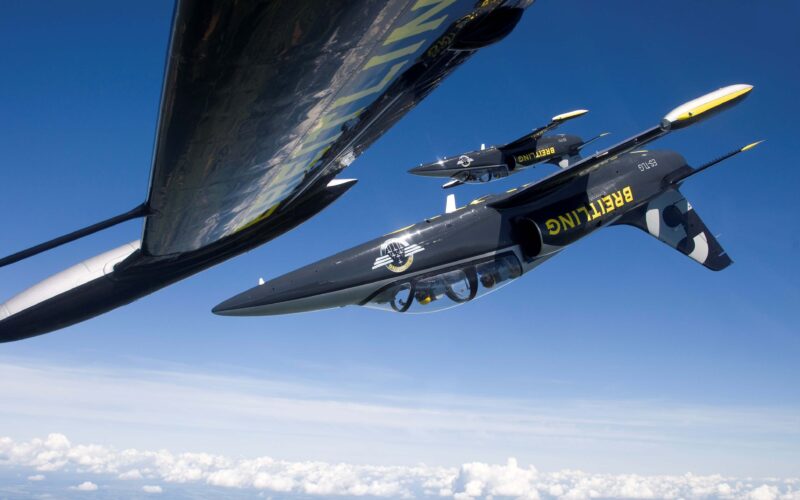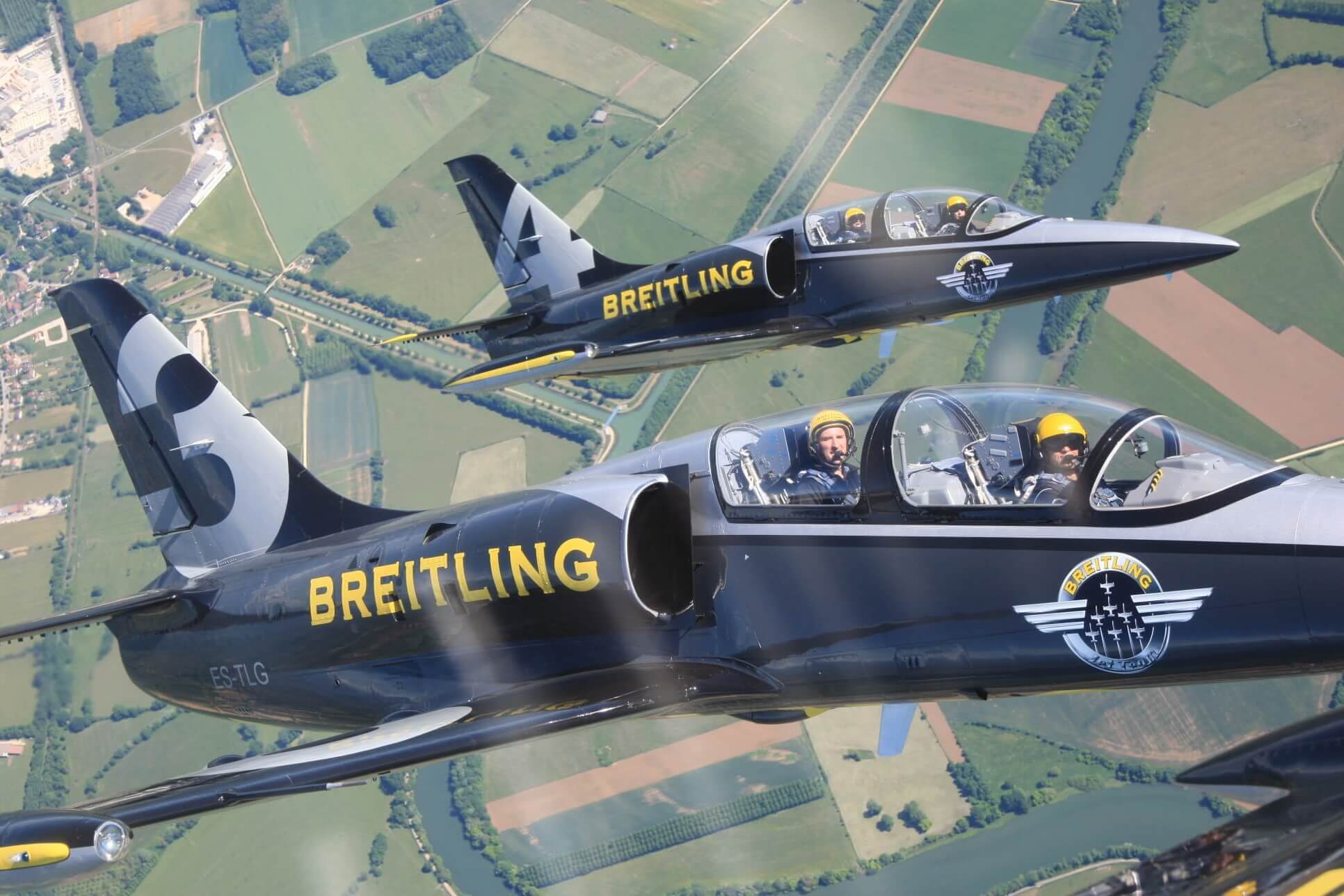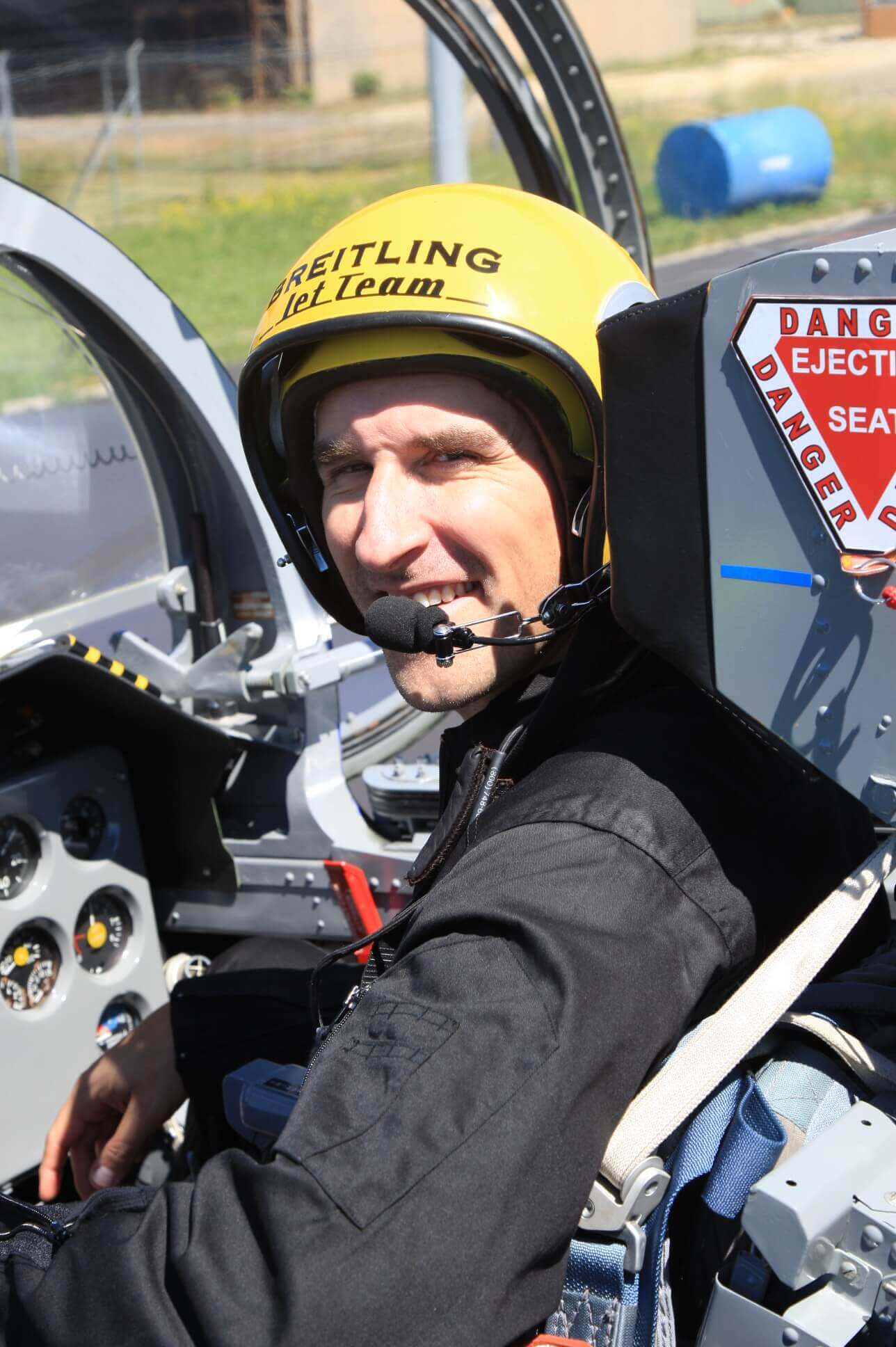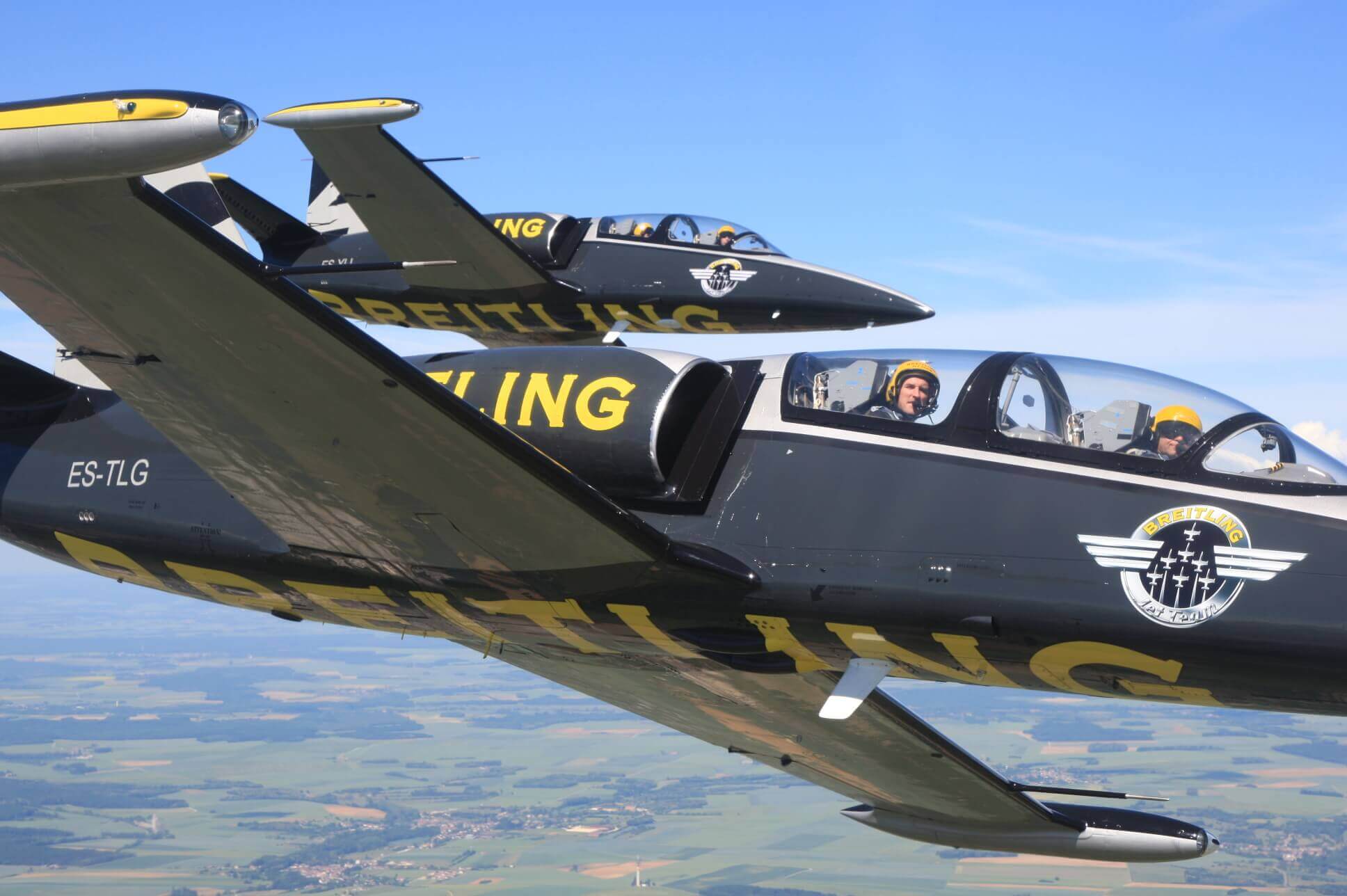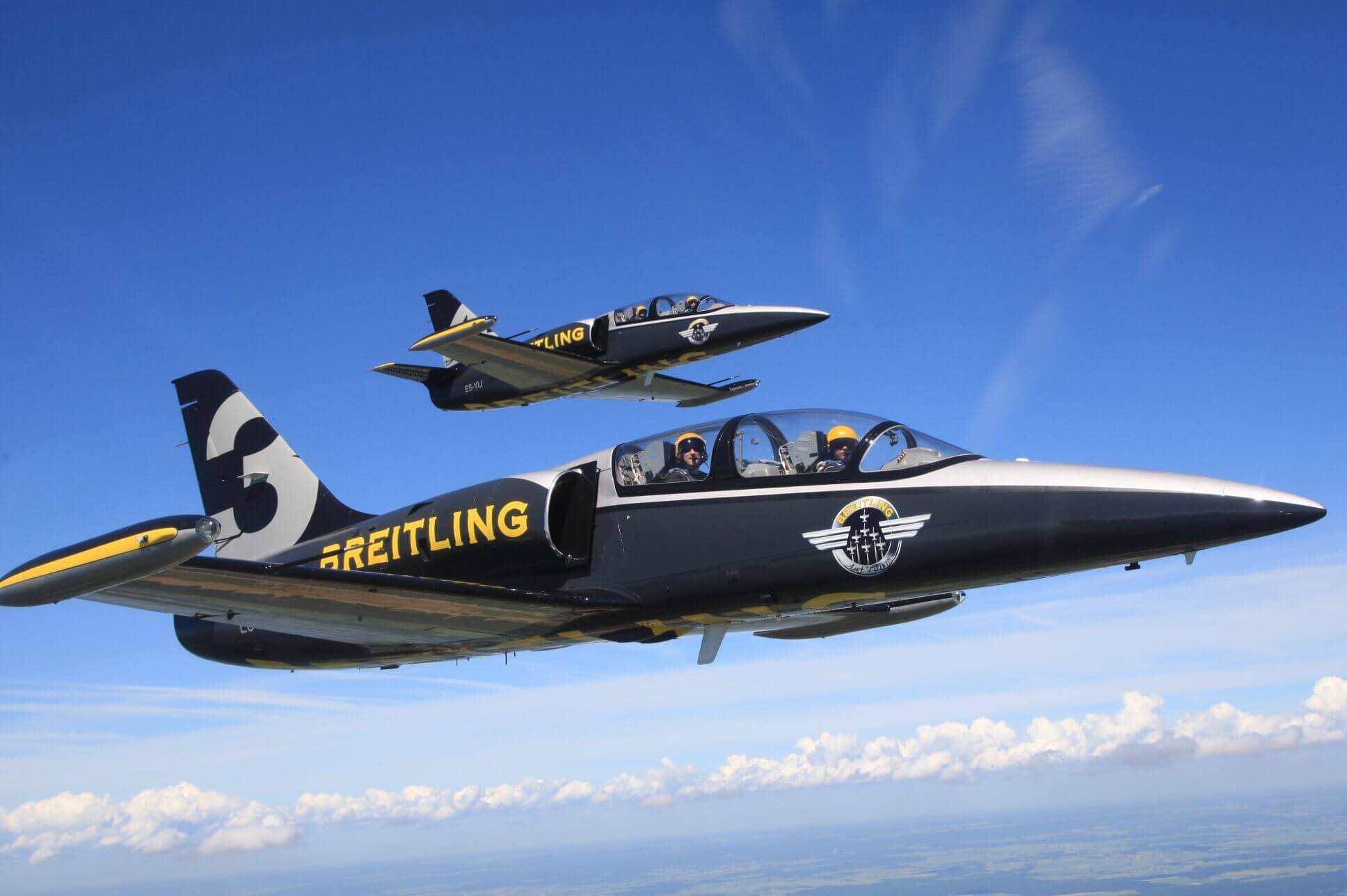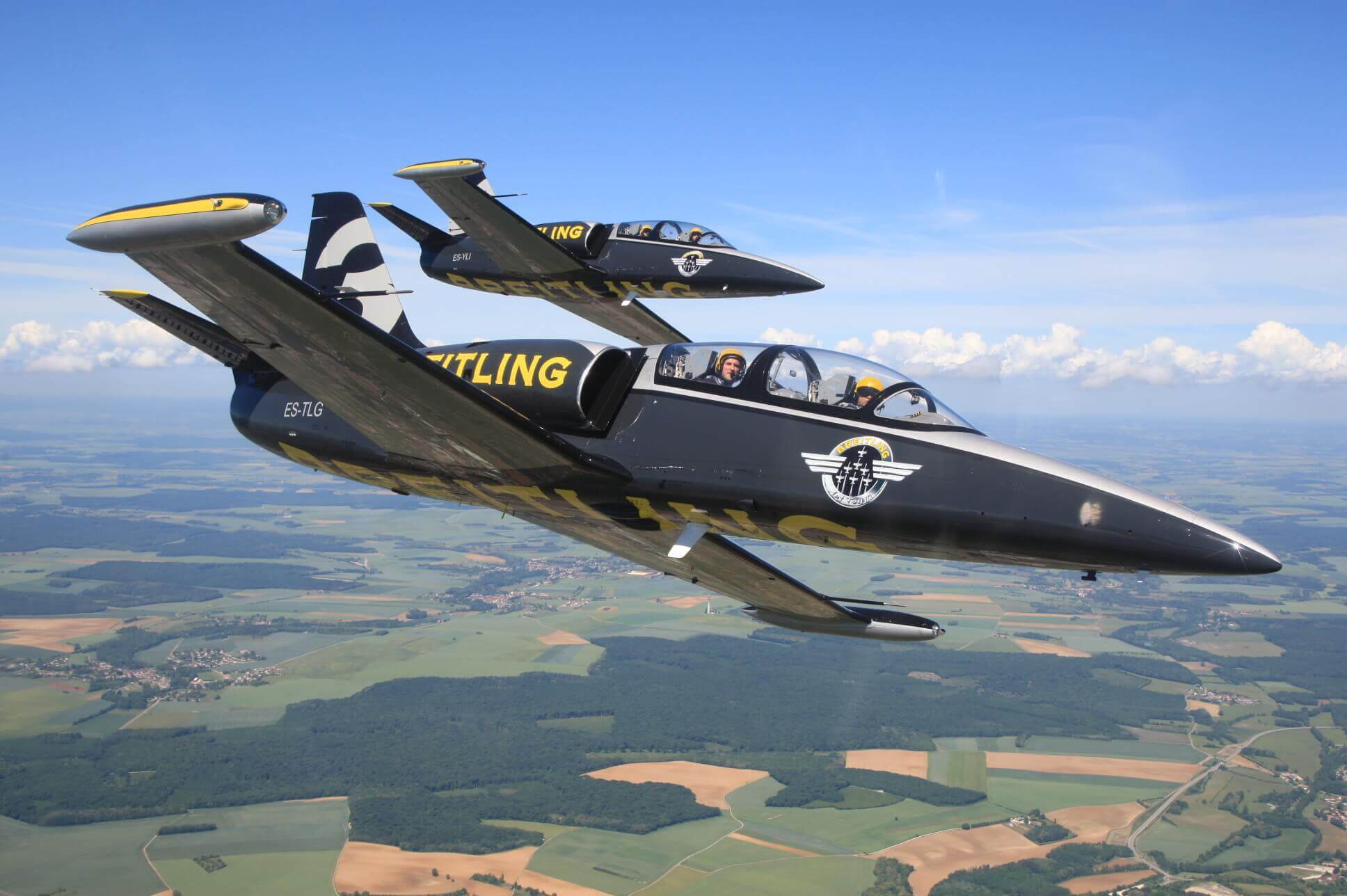As Top Gun: Maverick hit theatres this summer, a clip of British TV presenter James Corden of The Late Late Show flying with Tom Cruise to promote the blockbuster movie racked up more than 27 million views on YouTube.
Having joined Cruise in the Hollywood superstar’s personal P-51 Mustang, Corden’s next challenge was to experience flight in an L-39 jet trainer, again with ‘Maverick’ at the controls. The YouTube stunt was an instant hit, giving the public a brief but entertaining glimpse of what it’s like to fly military jets. The reality of flying the Aerovodochody L-39 Albatros surpasses even the screen version. Corden was elated after the trip, although also relieved to be back on the ground.
“The reality of flying the Aerovodochody L-39 Albatros surpasses even the screen version,” writes AeroTime’s Ben Griffiths. Image by Michael Jorgensen
I’ve been privileged to fly the L-39 twice with a group of Dijon, France-based aviators who performed at airshows and offered experience flights under the Breitling watch brand up until 2019. Today, the team are known as ‘Apace Aviation’ and continue to operate the aircraft. The L-39 itself has been in operation for over 50 years, with more than 30 armed services flying the type, including the former Soviet and East German air forces.
Described as having excellent handling characteristics across the whole flight envelope, more than 2,800 examples were delivered worldwide, with some 300 in civilian hands today. Having made its first flight in 1968, the L-39 was designed as a successor to the earlier L-29 Delfin, with full-scale production beginning in 1972.
AeroTime’s Ben Griffiths recalls taking to the skies in the Aerovodochody L-39 Albatros. Image by Michael Jorgensen.
Pairing an efficient but powerful jet turbofan engine with a sleek, streamlined fuselage, the Albatros was built to deliver a strong but economical jet trainer for Warsaw Pact air forces. Easy to maintain, cheap to operate and highly reliable, the aircraft can operate from grass strips and semi-prepared airfields.
The one downside is the Albatros lacks power when compared with Western counterparts like the BAE Systems Hawk, chosen mount of the Red Arrows. But it looks good, is easy to fly and to maintain, is reliable and quite affordable to operate if you compare it with other military jets.
Given my logbook when I flew with the team had a mere 140 hours in it, and all on piston-engined, propeller aircraft, I had a sense of trepidation as to how a lowly private pilot would cope with the experience. I needn’t have worried. Team leader Jacque Bothelin and his fellow pilots were determined that I’d get to control, and enjoy, their airplane by trying my hand at jet formation flying, as well as riding along during a seven-aircraft aerobatic routine that would demonstrate the L-39’s full capabilities.
The L-39 has been in operation for over 50 years with more than 30 armed services. Image by Michael Jorgensen
Suited up in flying kit and helmet, the nerves were building as I was settling into my seat in the rear cockpit of Francois Ponsot’s aircraft. The team’s pilots are all highly experienced, mainly French air force and some ex-Patrouille de France – the French equivalent of the Red Arrows. With Ponsot – nicknamed ‘PonPon’ – I was in good hands. The maintainer strapping me in pointed out the various safety features of the jet, but my heart jumped a beat when he explained the ejection seat, which would propel me clear of the stricken airplane should disaster strike. Removing the safety pins, I was now sitting atop a rocket. That does wonders for your concentration.
Looking around the cockpit to familiarize myself helped me to relax. The battleship grey instrument panel and dials were simple and basic, similar to most trainers I’ve flown, aside from the chunkier switches and prominent stick and throttle controls. The canopy closing with a clunk brought my attention back to the outside world as PonPon began the starting sequence.
The L-39 uses a small motor to spool up the fan of the main engine and get it to operating speed before fuel is added and the jet bursts into life. A muffled roar can be heard from inside the cockpit – outside I knew a veritable tornado was now searing the air in a cacophony of noise.
The one downside is the Albatros lacks power when compared with Western counterparts. Image by Michael Jorgensen.
As our wingmen checked in on the radio as being ready to launch, PonPon released the brakes, and we began our slow trundle towards the active runway. Soon we were all lined up and ready to go. Our jet sat in the number 2 position to the left of the leader in the first element of three aircraft. The remaining four were in a diamond shape behind us on the runway. With a distinct nod of the head, Bothelin signaled the takeoff and our jets surged forward as one, thudding over the gaps in the concrete runway at Dijon with increasing speed until that delightful moment when the wheels left the earth, and the aircraft take to the wing.
This was followed by a heavy clump, clump as the wheels retracted into their bays and we accelerated away from the airport. Our lead element was rapidly joined by the other four jets. PonPon called: “Look left”, and outside another wingman slid effortlessly into position and stayed locked there as if glued in place. My fellow passengers were grinning away, like me barely able to comprehend what their eyes were seeing. Your first taste of formation jet aerobatics is truly sensational. The power and sense of freedom is overwhelming. We were bobbing along in the leader’s slipstream. I felt I could almost touch his jet and feel the air streaming over the wings.
A short transit to the team’s training area and we began the aerobatic sequence with a series of wingovers and formation changes. I was barely prepared for the onset of ‘G’ – the gravitational pull that loads up the body with additional forces and can easily lead to blacking out if you’re not ready, as the blood is pushed towards your feet and away from the brain. I was looking over my left shoulder as we pulled 4.5G – I was now 4.5 times my normal bodyweight – and my head was uncomfortably pinned in place.
The Albatross has an efficient but powerful jet turbofan engine and a sleek, streamlined fuselage. Image by Michael Jorgensen.
Easing off the ‘G’ briefly, I determined to keep looking straight ahead during the routine, as we dived down to begin a loop, describing a perfect circle in the sky. Pulling firmly back on the controls, PonPon steered us skyward, the aircraft becoming inverted before diving back down to our starting position to complete the loop.
Our routine was soon over and PonPon invited me to take the controls. At this point I felt like James Corden must have done, seriously out of my depth. But, with PonPon’s expert instruction, I was soon making a reasonable fist of remaining in position with frequent but tiny adjustments to throttle and stick, chasing the aircraft in front and to the side as I fought hard to stay in formation.
After enjoying this for a while, PonPon took back control and our element slipped down into low level for our transit back to Dijon. The jet was bumping around over the fields of rural France, akin to driving over a rutted road. Fighter pilots fly low to avoid enemy radar, just as they did in their F/A-18s in Top Gun: Maverick when attacking the enemy missile site. We were doing it just for fun and the sensation of speed was sensational.
Making our approach to land back at the airport, the team lined up for a formation run-in-and-break in classic military style. This not only looks good but is designed to position the jets for landing, adequately spaced out but also to slow down to approach speed.
Having enjoyed flying with the team and been impressed by their skills, I was not the least surprised that our touchdown was silky smooth. The L-39 gliding down to kiss the runway, with the nose kept high for aerodynamic braking. The nosewheel dropped and we coasted back to our parking spots outside the team’s HQ building.
The canopy opened and the fresh air blasting into the cockpit reawakened my senses. It was pleasant to remove my helmet and just sit in the cockpit for a while to listen to the gyro instruments winding down and to contemplate what I’d just experienced.

